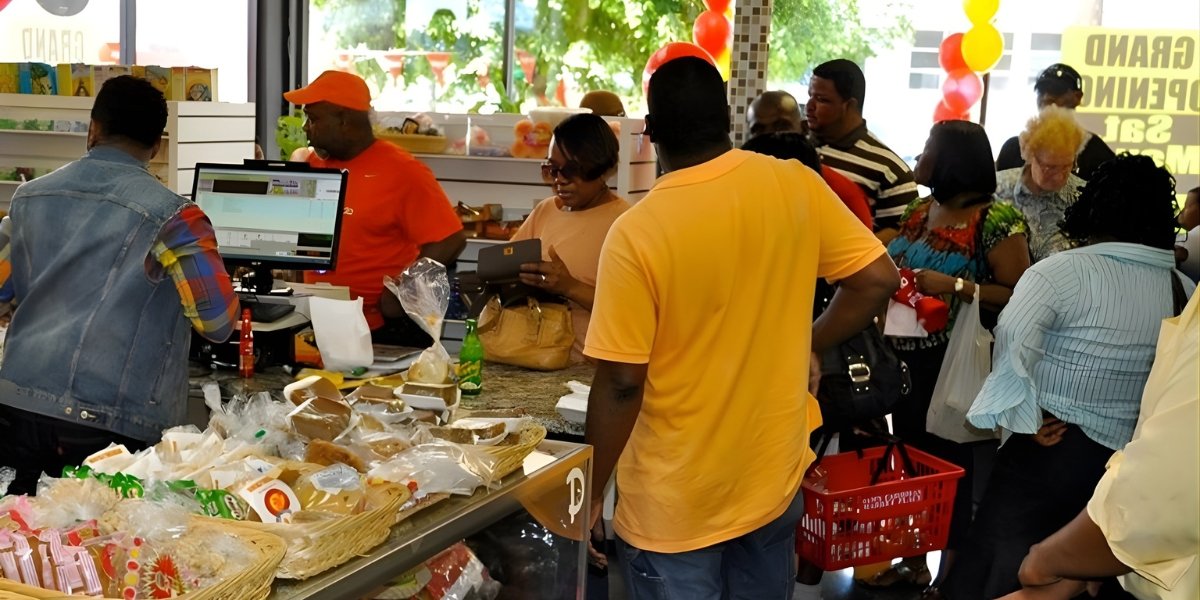Sam’s Caribbean Marketplace Is Proving That Niche Grocers Can Scale Without Selling Out
By: Mary Sahagun
In the heart of Long Island, a Caribbean marketplace has quietly flourished for more than 30 years, born not from corporate strategy but from a longing for home. When Andrew and Jean Morris opened Sam’s Caribbean Marketplace in 1993, their vision was simple: create a place where Caribbean people could walk in, see the foods they grew up with, and feel instantly connected.
What began as a small shop in Hempstead has grown into a cultural hub, a store that feeds both body and spirit. From oxtail and rice to hot Jamaican patties, from herbs and spices to the easy laughter of familiar accents, Sam’s offers more than products on a shelf. It offers a bridge back to the islands, a place where the Caribbean community on Long Island can gather, remember, and belong.
That cultural bridge now stretches far beyond the walls of their West Hempstead storefront. Sam’s has evolved into a thriving e-commerce brand serving customers all over the U.S. and back in the Caribbean. Its success points to something bigger happening in retail: niche grocers, once considered small players in a game dominated by chains, are finding their edge online, and thriving because of their specificity, not in spite of it.
More Than Groceries, A Taste of Home
For millions in the Caribbean diaspora, finding the products and ingredients they grew up with can be a challenge, particularly outside of larger metropolitan areas. This is when the charm and authenticity of local businesses can stand apart. They know food is much more than a means to an end. It is a lifeline to heritage, memory, and tradition, and it can be disheartening when that connection is hard to find.
Sam’s Caribbean Marketplace has always understood that. It has never been about offering every product under the sun. It is about offering the right ones: ackee in a can, Matouk’s pepper sauce, Walkerswood jerk seasoning, Red Label wine. These are not trend items or impulse buys. They are common staples in many Caribbean homes, lovingly stocked and sold by people who actually know what they are, how they are used, and why they matter.
That depth of cultural fluency is where niche grocers shine. It is not just about putting items on a shelf; it is about creating a space where people feel seen and remembered.
An Early E-Commerce Innovator
Long before online grocery was the norm, Sam’s was shipping island staples across the country. Their first website launched in 2003, a bold move at the time, and it quickly generated hundreds of thousands in annual revenue. It was not flashy, but it worked. People who could not get bun and cheese in Minnesota or sorrel in Missouri now had a direct line to the Caribbean pantry they grew up with.
Fast forward to today, and Sam’s has upgraded to a sleek, mobile-friendly platform at sams24-7.com. The digital storefront reflects years of learning: how people shop, what they are really looking for, and what keeps them coming back. It is not just the products; it is the commitment behind them. That when you buy from Sam’s, you are buying from someone who understands what you need without needing to explain.
The Value of Staying True to Yourself
In an era when many retailers focus on volume and trends, Sam’s has grown by staying consistent. It is still owned and operated by the same family that started it. Andrew Morris still shows up to work. His wife, Jean, a registered nurse, still lends her expertise. Their daughter Melissa, who started in the store at age 14, still plays a role in the business. Even the name, Sam’s, pays tribute to Jean’s late father, Samuel Bonar. That kind of continuity is rare, and customers feel it.
What is more, Sam’s is among the Caribbean grocery stores in the New York tri-state area that is owned by people of Caribbean descent. That is no small detail. In a space where some ethnic food aisles are managed by non-community members, authenticity is more than just a marketing term; it reflects a lived experience. Sam’s did not enter the Caribbean market from the outside; it grew up inside it.
What Other Retailers Can Learn
Sam’s journey provides insights for today’s business landscape. First, being niche is a focus, not a limitation. Second, culture can be a business advantage when rooted in respect and real knowledge. Third, small businesses can scale while maintaining their values if they do so intentionally.
In a world flooded with choices, customers are looking for something real. They want to know who they are buying from, and why it matters. Sam’s Caribbean Marketplace has built its reputation by answering that need over and over again with every bottle of sorrel, every spicy beef patty, every thoughtfully packed delivery.
It turns out, selling more than spices is exactly what keeps people coming back.




